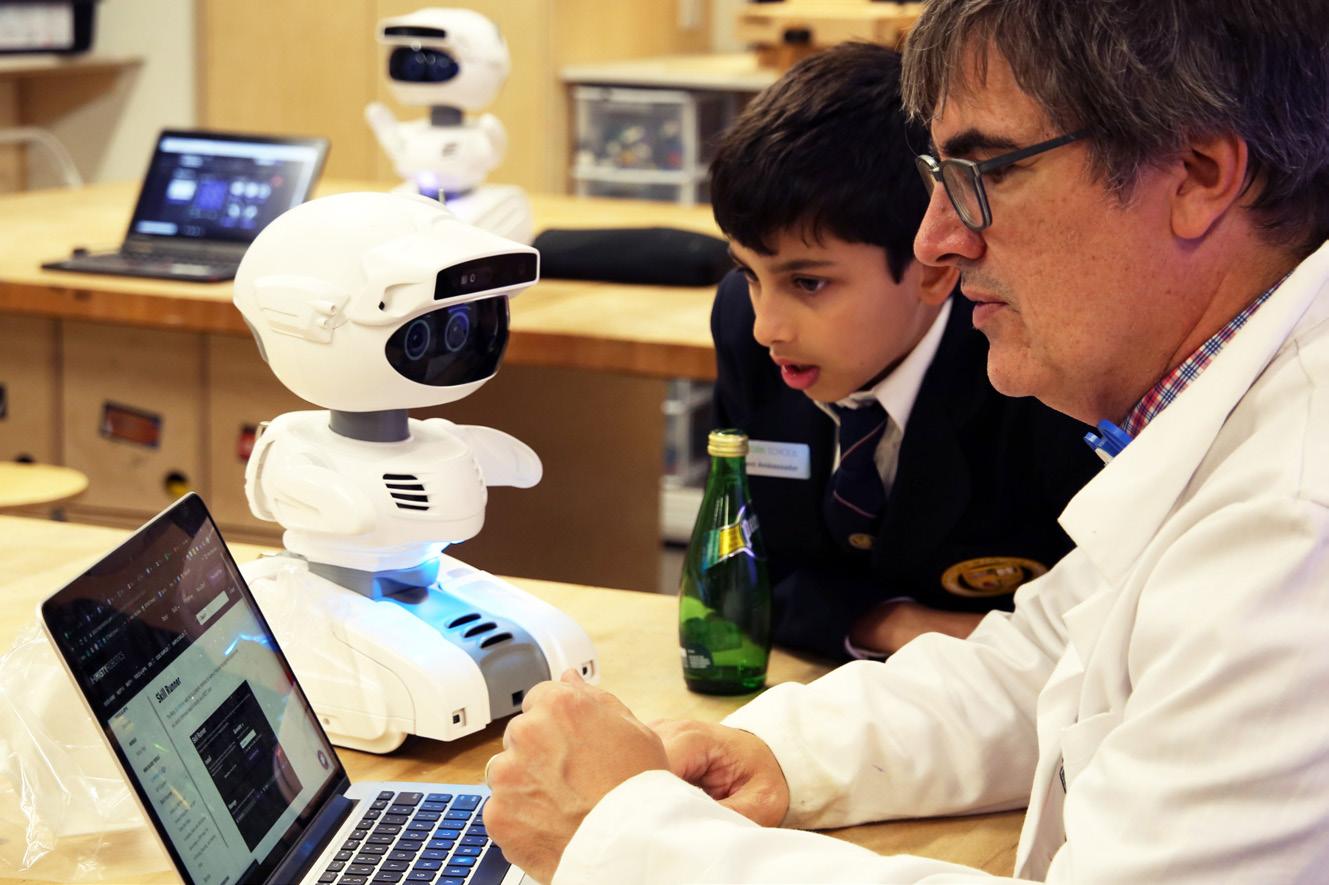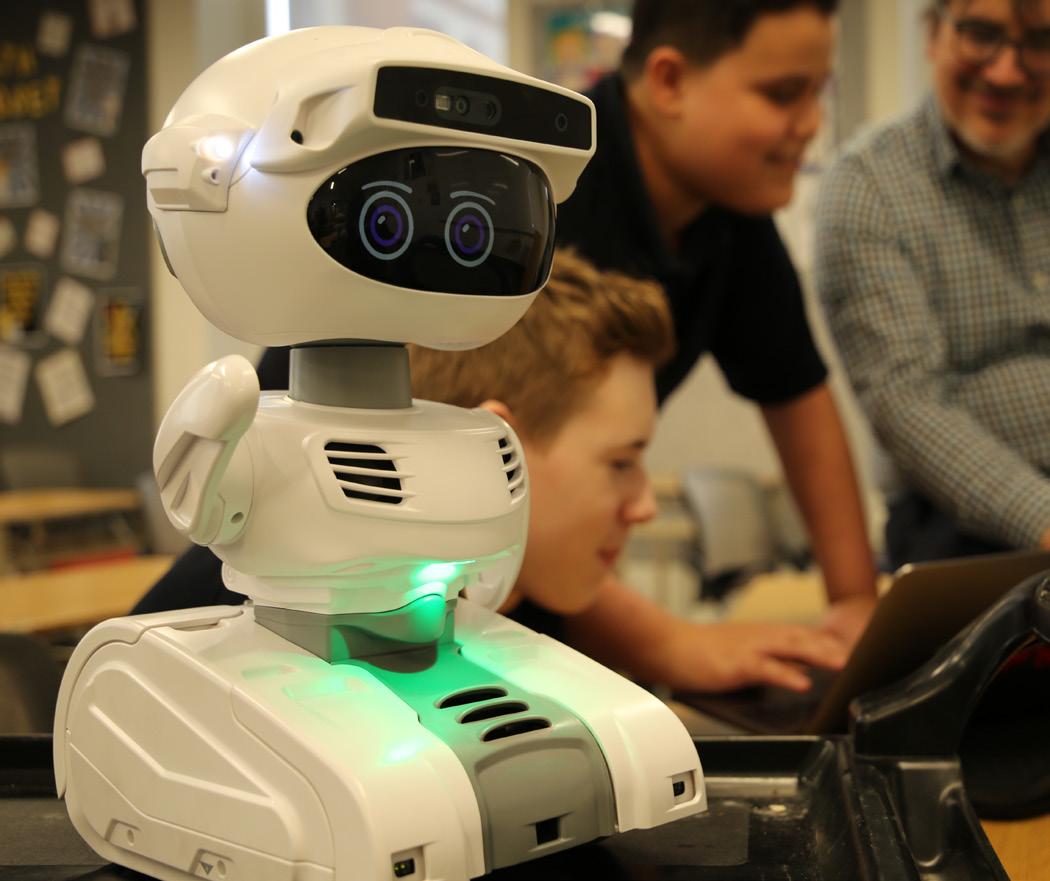
2 minute read
ROBOTS AMONG US
Fostering creative collaboration to realize a common goal.


In his lab coat and sporting a bow tie he designed and printed himself using the 3-D printer, Mr. Cooper would not look out of place on a science fiction movie set. He is thoughtful and always curious. His eyes light up when you talk about the future of technology. His curiosity is infectious with the students as they build and test rockets, or are learning how to programme the ‘new students’.
The 5 new students It’s not hard to imagine the potential solutions Misty could help solve. Students today programming Misty to go on a classroom scavenger hunt could in the future programme the same robot to conduct a minesweeping exercise of a farmer’s field, or conduct a biodiversity scan of Toronto’s ravines. With the open source software component of Misty, we ask the questions we want to solve. Misty parts can be printed off a 3D printer, which highlights how versatile the robot is.
The Misty’s have google accounts to help with collaboration, but no student ID cards. “Something we should maybe revisit given that no other school in Canada has them,” muses Cooper. The students are teaching them how to talk, and respond to dialogue flow, taking project direction from students who make command updates through the cloud.
The new robots’ growth continues in pace with the students’ learning. “It’s not really about the robots, it’s about the opportunities in Advanced Learning.” says Cooper. “In a future where coding is becoming almost as important as reading and writing everyone deserves the opportunity to learn the language of tomorrow.”
They look like friendly chess pieces and come in black and white. The 2-ft-tall, 6-lb robots are a deep learning processor capable of a variety of machine learning tasks. Their 126 sensors include 4K cameras, 3 forward facing lasers and directional microphones. They can recognize faces, objects, and sounds (and can identify from where the sound comes). They also have touch senses and can detect distances and map spaces.
“They’re also cute,” adds a student.
While the look and feel of the robot is definitely more akin to a character from Wall-E than a tool, it can be better described as a platform around which students collaborate to solve challenges. “They are better tools than computers because they provide a tactile experience,” Cooper explains. “Before, we’d build programmes through a computer - a box on a table - trying to shape an outcome. Now with the robots, our programming is demonstrated directly. You’re touching it, it moves around, there’s sound as it’s crashing into something. They stimulate all your senses.” With support from The York School Annual Fund, the Misty’s are helping the Computer Science programme meet its full potential for the benefit of all York School students now and into the future.



